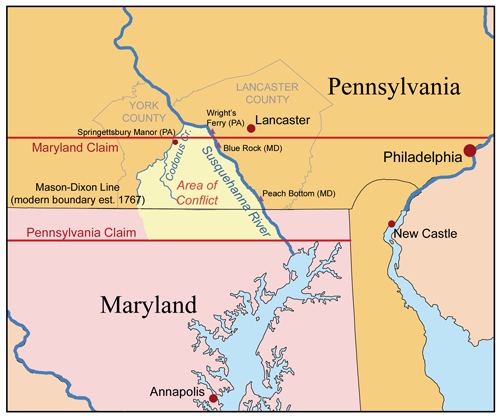|
George Brown's Sons Cotton And Woolen Mill
George Brown's Sons Cotton and Woolen Mill, now known as the Sassafras Alley Apartments, is an historic mill complex which is located in Mount Joy, Pennsylvania, Mount Joy, Lancaster County, Pennsylvania. It was listed on the National Register of Historic Places in 1995. History and architectural features This complex includes nine contributing buildings. They are identified as Building A through Building I, and date from the early nineteenth century to 1916. The buildings were converted to apartments between 1988 and 1991. ''Note:'' This includes It was listed on the National Register of Historic Places in 1995. References {{DEFAULTSORT:Brown's, George, Sons Cotton and Woolen Mill Industrial buildings and structures on the National Register of Historic Places in Pennsylvania Buildings and structures in Lancaster County, Pennsylvania National Register of Historic Places in Lancaster County, Pennsylvania ... [...More Info...] [...Related Items...] OR: [Wikipedia] [Google] [Baidu] |
Mount Joy, Pennsylvania
Mount Joy is a borough in Lancaster County, Pennsylvania, United States. The population was 8,346 at the 2020 census, and an estimated 8,323 in 2021. Name and origin The name is often shortened to "Mt Joy", as in Mencken (1963).Mencken (1963) p.653. Quote: However, citizens of the town often point out that this abbreviation is not proper because the town is not named for a mountain but is named after the "Good Ship" ''Mountjoy'' which famously broke a Catholic siege during the Siege of Derry. Due to the early settlement of the Protestant Scots-Irish in this region of Pennsylvania, many of the municipalities in the area were given names common to the North of Ireland, such as Derry Township, Londonderry Township, South Londonderry Township, Mount Joy Township, East Donegal Township, West Donegal Township, and Rapho Township. Mount Joy is often named in lists of "delightfully-named towns" in Pennsylvania Dutch Country, along with Intercourse, Blue Ball, Lititz, Bareville ... [...More Info...] [...Related Items...] OR: [Wikipedia] [Google] [Baidu] |
Lancaster County, Pennsylvania
Lancaster County (; Pennsylvania Dutch: Lengeschder Kaundi), sometimes nicknamed the Garden Spot of America or Pennsylvania Dutch Country, is a county in the Commonwealth of Pennsylvania. It is located in the south central part of Pennsylvania. As of the 2020 census, the population was 552,984. Its county seat is Lancaster. Lancaster County comprises the Lancaster, Pennsylvania metropolitan statistical area. Lancaster County is a tourist destination with its Amish community a major attraction. Contrary to popular belief, the word "Dutch" in "Pennsylvania Dutch" is not a mistranslation, but rather a corruption of the Pennsylvania German endonym ''Deitsch'', which means "Pennsylvania Dutch / German" or "German". Ultimately, the terms Deitsch, Dutch, Diets, and Deutsch are all cognates of the Proto-Germanic word meaning "popular" or "of the people". The continued use of "Dutch" instead of "German" was strengthened by the Pennsylvania Dutch in the 19th century as a way ... [...More Info...] [...Related Items...] OR: [Wikipedia] [Google] [Baidu] |
National Register Of Historic Places
The National Register of Historic Places (NRHP) is the United States federal government's official list of districts, sites, buildings, structures and objects deemed worthy of preservation for their historical significance or "great artistic value". A property listed in the National Register, or located within a National Register Historic District, may qualify for tax incentives derived from the total value of expenses incurred in preserving the property. The passage of the National Historic Preservation Act (NHPA) in 1966 established the National Register and the process for adding properties to it. Of the more than one and a half million properties on the National Register, 95,000 are listed individually. The remainder are contributing resources within historic districts. For most of its history, the National Register has been administered by the National Park Service (NPS), an agency within the U.S. Department of the Interior. Its goals are to help property owners a ... [...More Info...] [...Related Items...] OR: [Wikipedia] [Google] [Baidu] |
Industrial Buildings And Structures On The National Register Of Historic Places In Pennsylvania
Industrial may refer to: Industry * Industrial archaeology, the study of the history of the industry * Industrial engineering, engineering dealing with the optimization of complex industrial processes or systems * Industrial city, a city dominated by one or more industries * Industrial loan company, a financial institution in the United States that lends money, and may be owned by non-financial institutions * Industrial organization, a field that builds on the theory of the firm by examining the structure and boundaries between firms and markets * Industrial Revolution, the development of industry in the 18th and 19th centuries * Industrial society, a society that has undergone industrialization * Industrial technology, a broad field that includes designing, building, optimizing, managing and operating industrial equipment, and predesignated as acceptable for industrial uses, like factories * Industrial video, a video that targets “industry” as its primary audience * Industr ... [...More Info...] [...Related Items...] OR: [Wikipedia] [Google] [Baidu] |
Buildings And Structures In Lancaster County, Pennsylvania
A building, or edifice, is an enclosed structure with a roof and walls standing more or less permanently in one place, such as a house or factory (although there's also portable buildings). Buildings come in a variety of sizes, shapes, and functions, and have been adapted throughout history for a wide number of factors, from building materials available, to weather conditions, land prices, ground conditions, specific uses, prestige, and aesthetic reasons. To better understand the term ''building'' compare the list of nonbuilding structures. Buildings serve several societal needs – primarily as shelter from weather, security, living space, privacy, to store belongings, and to comfortably live and work. A building as a shelter represents a physical division of the human habitat (a place of comfort and safety) and the ''outside'' (a place that at times may be harsh and harmful). Ever since the first cave paintings, buildings have also become objects or canvasses of much artist ... [...More Info...] [...Related Items...] OR: [Wikipedia] [Google] [Baidu] |


